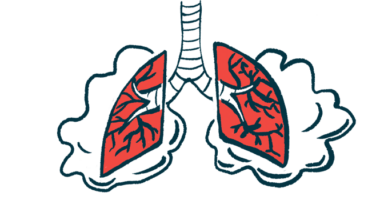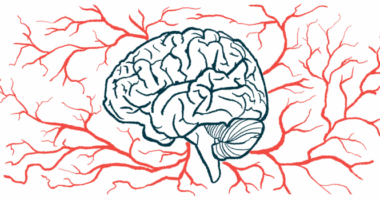Machine learning tool may help in diagnosing primary Sjögren’s
Scientists develop novel test that uses stool samples to ID disease

A machine learning tool that can analyze certain molecules in stool samples may help to better diagnose primary Sjögren’s disease, according to a new study from researchers in China.
The team found that their novel model, using fecal samples, could distinguish primary Sjögren’s patients from healthy individuals with an accuracy of more than 90%.
The use of this machine learning tool, if further developed, might ultimately help to diagnose primary Sjögren’s without the need for the invasive procedures now typically required, the team noted.
“This study demonstrates the strong potential of our metabolomics-based diagnostic model as a noninvasive tool to aid in the screening and early identification of [primary Sjögren’s disease],” the researchers wrote. Metabolomics refers to the study of metabolites, or intermediate products of biochemical processes, within cells, tissues, and body fluids.
The study, “Application of metabolomics and MCDM approach in developing a novel strategy for disease diagnosis: A case study in Primary Sjögren’s Syndrome,” was published in the Journal of Pharmaceutical and Biomedical Analysis.
Sjögren’s disease is an autoimmune disorder that’s marked by inflammation and damage mainly to moisture-producing glands, such as the salivary and tear-producing glands. It leads to symptoms like dry eyes and dry mouth.
In primary Sjögren’s, the disease occurs on its own, as opposed to secondary Sjögren’s, which develops as a complication of other underlying conditions.
Primary Sjögren’s patients often undergo invasive procedures to get diagnosis
The underlying causes of primary Sjögren’s are not well understood, and there is no single test that can diagnose the disease. As such, patients often have to undergo many different tests, including invasive procedures like biopsies, before being definitively diagnosed with primary Sjögren’s.
Scientists are actively working to develop new tests that could help improve the speed and accuracy of diagnosis for Sjögren’s and other related disorders. One strategy that’s been explored is to use metabolomics.
“Metabolomics has not only provided new insights into [disease development], but also has great potential in identifying new biomarkers of [primary Sjögren’s disease],” the researchers wrote.
The team, led by researchers at Shanxi University, conducted metabolomic analysis on stool samples from 93 primary Sjögren’s patients and 42 age-, sex-, and race-matched healthy people. The scientists measured levels of dozens of metabolites in each sample, then used machine learning to analyze the data.
Machine learning is a form of artificial intelligence that basically works by feeding a computer a large set of data alongside a set of mathematical rules (algorithms) that the computer uses to identify patterns in the data.
The computer can then use the identified patterns to make sense of additional datasets. In this study, the researchers used a technique called stacking, in which results from different algorithms are combined to provide better accuracy.
Machine learning tool had 95% accuracy in small study
Of 151 metabolites found at significantly different levels between the Sjögren’s and control groups, the researchers zeroed in on 10 specific molecules that showed the strongest dysregulation in primary Sjögren’s patients. The results were validated in an independent group of 30 patients and 10 healthy controls.
The scientists said that limiting the number of metabolites “strikes an optimal balance between model complexity and performance” and “can not only optimize the model’s overall performance but also improve its clinical practicality.”
These findings demonstrate that integrating machine learning into metabolomics research provides a robust, noninvasive solution for [primary Sjögren’s disease] diagnosis, with high generalizability and clinical applicability.
Results showed that the 10 metabolite-based tool, integrating six machine learning models, had an overall accuracy of 95% for distinguishing primary Sjögren’s patients from healthy controls.
“These findings demonstrate that integrating machine learning into metabolomics research provides a robust, noninvasive solution for [primary Sjögren’s disease] diagnosis, with high generalizability and clinical applicability,” the team wrote.
According to the researchers, this method worked for “transforming subjective judgment into objective, quantifiable assessments.”
“This strategy highlights the unique advantages of using machine learning for metabolomics data analysis, particularly in detecting diagnostic biomarkers and guiding clinical decisions,” the team wrote.
The researchers stressed, however, that their diagnostic model was based on data from a small number of patients. Thus, further studies are needed to validate the findings and refine the model before it would be usable in clinics to help diagnose Sjögren’s.







